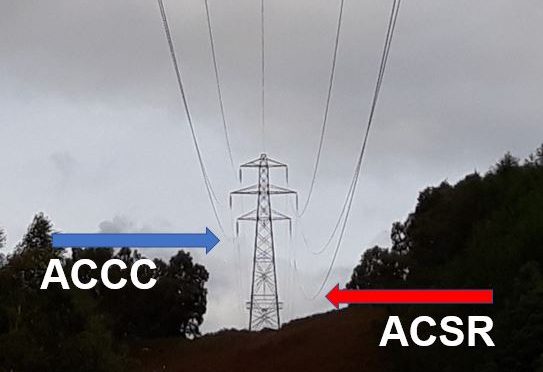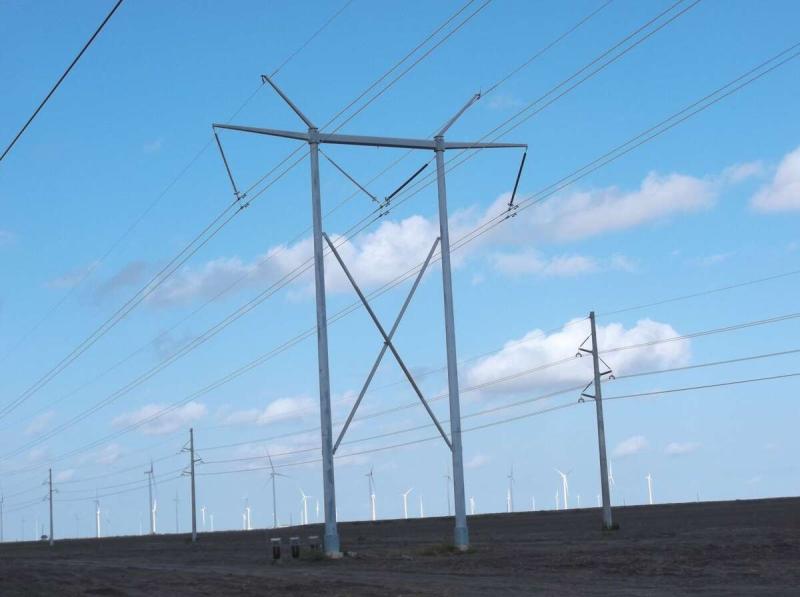High-Capacity, Low-Sag ACCC conductors outperform other High-Temperature rated conductors
Though ACSR (Aluminum Conductor Steel Reinforced) conductor is the most widely used conductor, worldwide, the need for a greater capacity conductor was realized in the late 1970’s. The introduction of ACSS (Aluminum Conductor Steel Supported) conductor offered increased capacity over ACSR due to its ability to operate at temperatures as high as 250°C. This ability was created by simply pre-annealing the conductive aluminum strands in the factory. Fully annealed aluminum offers electrical resistance of ~63% IACS (International Annealed Copper Standard), while non-annealed aluminum offers electrical resistance of a slightly lower 61% IACS.
If an ACSR conductor is operated at temperatures above 93°C, it’s aluminum will become annealed over time and it will essentially turn itself into an ACSS conductor during service. The drawback in this case, however, is that a factory built ACSS conductor typically uses higher quality steel wire galvanization and ACSS hardware is typically larger and more robust to prevent premature failure at higher temperatures. A well known EPRI report demonstrated that operating ACSR conductor using conventional fittings caused rapid degradation of the oxidation inhibitor inside the connectors which led to rapid degradation and component failure.
While ACSS conductor is capable of operating at higher temperatures under higher electrical load conditions, the reduced strength of ACSS compared to ACSR often requires more and/or taller structures to be utilized. Drake size ACSR, for example, is rated at 31,500 pounds, while ACSS conductor is rated at 25,900 pounds. A higher strength version of ACSS known as ACSS-HS285 increases the strength of ACSS up to 28,000 pounds. While design consideration has to be given to the reduced strength of ACSS requiring higher initial and underload tension / vibration considerations, the primary drawback with ACSS is it propensity to sag much like an ACSR conductor. The bottom line here is that if an existing ACSR line was designed to accommodate the sag at ~93°C, replacing the ACSR with ACSS is going to require structure height extensions as it will sag much further than ACSR under higher load conditions.
Increased strength, greatly reduced thermal sag, lowest cost solution
ACCC® Conductor, on the other hand, offers increased strength (41,200 pounds for Drake size), and, more importantly, greatly reduced thermal sag. This means that the capacity of an existing ACSR line can be doubled by upgrading to ACCC without the need to replace or modify existing structures.
Other performance / durability benefits of ACCC compared to ACSR or ACSS is that ACCC offers greatly improved corrosion resistance as well as resistance to fretting failure and cyclic load fatigue caused by Aeolian Vibration and thermal cycling.
Finally, and with great significance, the ACCC conductor’s lighter weight composite core allows the incorporation of 28 percent more aluminum (using compact trapezoidal shaped strands), without a weight or diameter penalty. The added aluminum content and reduced electrical resistance allows the ACCC conductor to reduce line losses between 25 and 40 percent compared to equally sized ACSR / ACSS conductors.
Reduced line losses serves to reduce operating costs, fuel consumption (and associated GHG / CO2 emissions) while also freeing up generation capacity that is otherwise wasted.
When upfront capital costs, maintenance costs and life cycle costs are considered, ACCC conductor blows away the competition and offers the lowest cost solution, by far.







